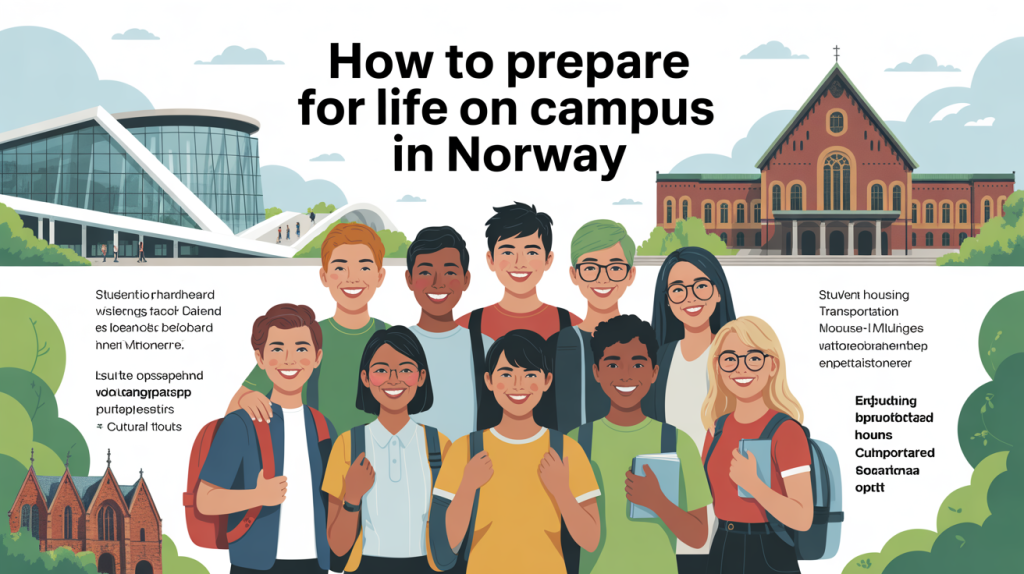How to Prepare for Life on Campus in Norway: A Comprehensive Guide for International Students
Quick Navigation
Understanding the Academic Environment in Norway
The academic culture in Norway emphasizes balance and flexibility, which is notably different from many other countries.
Structured Study Hours and Work-Life Balance
Norwegian universities generally schedule coursework and lectures between 8 am and 4 pm, promoting a sustainable balance between academic work and personal time. This schedule allows students to engage deeply with their studies without sacrificing well-being. During exam periods, study spaces may have extended hours, but outside these times, universities respect boundaries around personal time and rest.
Focus on Relevant Programs and Innovation
Norwegian higher education institutions prioritize programs with practical relevance, often focusing on fields such as innovation, entrepreneurship, welfare, health, and education. This focus prepares students for careers aligned with Norway’s socio-economic priorities.
Separation of Academic and Social Life
One characteristic feature of Norwegian universities is the distinction between academic affairs and student life activities. Student organizations and social clubs operate independently, often as non-profits, allowing students to explore extracurricular interests without academic pressure. Understanding this can help students proactively seek out social engagement opportunities.
Integrating into the Student Community
Campus life in Norway offers a welcoming and culturally inclusive environment, crucial for international students to feel at home.
“Fadderuka” (Initiation Week)
Upon arrival, international students typically experience “fadderuka”—a week-long orientation filled with team-building exercises, social events, and concerts. This initiation program is designed to foster connections and ease the transition into university life.
Student Clubs and Organizations
Norwegian campuses host a diverse array of student organizations including sports teams, cultural groups, and special interest clubs. Although information about these groups may not always be centralized, students often rely on peer networks to discover opportunities to participate and contribute.
Support Networks
Apart from social clubs, universities provide support services such as counselling, international student offices, and health services to support students’ welfare throughout their studies.
Managing Costs and Budgeting Effectively
While Norway’s education system is subsidized with tuition-free public universities, the high cost of living is an important consideration for international students.
Typical Living Expenses
| Expense | Approximate Monthly Cost (NOK) |
|---|---|
| Student Housing | 3,000 – 6,000 |
| Food | 3,000 – 5,000 |
| Transportation | 500 – 1,500 |
| Personal Expenses | 2,000 – 4,000 |
Student discounts and subsidized housing options are available, but securing affordable accommodation early is essential.
Financial Planning Tips
- Explore on-campus housing options via university portals.
- Use student discounts on transportation and cultural activities.
- Budget for seasonal expenses, especially during winter months.
- Consider part-time work opportunities to balance income and expenses.
Balancing Work and Study
Many international students in Norway pursue part-time jobs to supplement their finances and gain valuable work experience.
Employment Opportunities
In urban centers like Oslo and Bergen, part-time employment is accessible for students, with roles commonly available in hospitality, retail, and administrative positions. Additionally, student salaries in Norway are relatively competitive, providing decent financial support.
Internships and Practical Training
The culture around internships is evolving, with increasing opportunities for bachelor’s and master’s students to engage with industry through projects and placements. These internships offer vital professional experience and networking opportunities.
Efficient Transportation Options for Students
Transportation in Norway is known for its reliability and eco-friendliness, complementing the active lifestyles of students.
Public Transport Networks
Students typically have access to discounted tickets for buses, trams, and trains, which form an extensive network connecting urban and surrounding areas.
Alternative Transit Choices
Cycling and walking are highly popular due to Norway’s commitment to sustainable living and well-maintained infrastructure for pedestrians and cyclists.
Planning Your Commute
- Obtain student passes early for the best rates.
- Consider proximity to campus when choosing accommodation.
- Use apps and university information portals to navigate transit schedules.
Conclusion: Prepare Today for a Rewarding Tomorrow
Understanding how to prepare for life on campus in Norway requires planning across academic, social, financial, and practical dimensions. By familiarizing yourself with the academic culture, engaging with the student community, budgeting wisely, balancing work and study, and leveraging efficient transportation, international students can thrive.
Study in Norway invites educational institutions and agencies to partner with us in building seamless connections with international talent. For personalized support and innovative recruitment strategies, contact us today to explore collaboration opportunities and empower your institution’s international student community.
Take the Next Step with Study in Norway
Explore how Study in Norway can help you attract, admit, and support international students effectively—building lasting success for your institution and your students.

